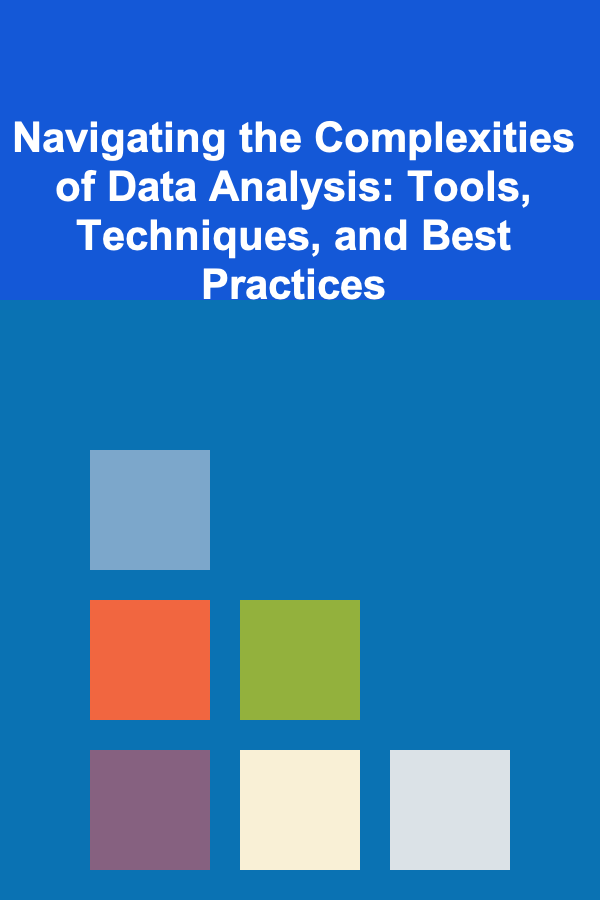
How to Protect Your Finances from Fraud and Identity Theft
ebook include PDF & Audio bundle (Micro Guide)
$12.99$8.99
Limited Time Offer! Order within the next:

In today's increasingly digital world, protecting your finances from fraud and identity theft is more important than ever. With the rise of online transactions, social media, and widespread data breaches, the threats to personal and financial security are more prevalent and sophisticated. Fraudsters and identity thieves are constantly finding new ways to exploit vulnerable individuals and organizations, making it essential to take proactive measures to safeguard your financial information.
This article explores the various types of fraud and identity theft, the risks they pose to your financial well-being, and most importantly, how you can protect yourself and your finances. From understanding the warning signs of fraud to implementing effective security measures, this comprehensive guide will equip you with the knowledge you need to defend yourself against financial crimes.
Understanding Fraud and Identity Theft
What is Fraud?
Fraud is the deliberate deception to gain an unfair or unlawful financial advantage. In the context of personal finances, fraud can occur in a variety of ways, including credit card fraud, investment fraud, insurance fraud, and more. Fraudsters may use various methods to trick victims, such as falsifying documents, forging signatures, or misrepresenting information to steal money or assets.
Common types of financial fraud include:
- Credit Card Fraud: When someone uses your credit card information without your consent.
- Mortgage Fraud: Misrepresentation of financial information during the mortgage application process.
- Investment Fraud: Deceptive practices in investment schemes that mislead investors into losing money.
- Insurance Fraud: Submitting false claims to insurance companies to receive payments or benefits.
What is Identity Theft?
Identity theft occurs when a criminal obtains and uses someone else's personal information without authorization, typically for financial gain. This stolen information can include Social Security numbers, bank account details, credit card information, and other sensitive data. Identity thieves may open new accounts in your name, make fraudulent purchases, or access your existing financial resources.
Some of the most common forms of identity theft include:
- Financial Identity Theft: Using your personal information to open credit accounts, take loans, or steal funds.
- Medical Identity Theft: Using your personal details to access healthcare services or obtain prescriptions.
- Tax Identity Theft: Filing false tax returns using stolen personal information to claim refunds.
- Criminal Identity Theft: When someone uses your identity during an arrest or criminal investigation.
The Risks of Fraud and Identity Theft
Fraud and identity theft can have severe consequences, ranging from financial loss to long-term damage to your credit score. The risks involved include:
- Financial Loss: Fraudsters and identity thieves can drain your bank accounts, max out your credit cards, and even take out loans in your name, leaving you financially devastated.
- Damage to Your Credit: Identity theft can severely impact your credit score, making it difficult to secure loans or obtain favorable interest rates in the future.
- Emotional and Psychological Stress: Dealing with the aftermath of fraud and identity theft can cause significant stress, anxiety, and a loss of trust in financial systems.
- Legal Problems: In some cases, victims of identity theft may have to deal with legal issues if the thief uses their information to commit crimes.
Steps to Protect Your Finances from Fraud and Identity Theft
1. Strengthen Your Online Security
As more financial transactions are conducted online, securing your digital presence is the first line of defense against fraud and identity theft. Here are some key actions to improve your online security:
Use Strong, Unique Passwords
A weak password is one of the easiest ways for fraudsters to gain access to your accounts. Always use strong, unique passwords for each online account, including banking, shopping, and social media sites. A strong password should contain a combination of uppercase and lowercase letters, numbers, and special characters. Avoid using easily guessable information such as birthdays or your pet's name.
Enable Two-Factor Authentication (2FA)
Two-factor authentication adds an extra layer of security by requiring a second form of verification, such as a code sent to your phone or email, in addition to your password. This ensures that even if your password is compromised, an attacker cannot access your account without the second factor.
Monitor Your Accounts Regularly
Regularly review your bank and credit card statements to detect any unauthorized transactions. Many banks and financial institutions offer mobile apps and alerts that allow you to track your spending in real-time. Set up transaction alerts to notify you of any large or suspicious charges.
Keep Your Software and Devices Updated
Make sure your operating system, antivirus software, and apps are always up to date with the latest security patches. Cybercriminals often exploit vulnerabilities in outdated software to access your personal data.
Be Cautious with Public Wi-Fi
Avoid accessing sensitive accounts or making financial transactions over public Wi-Fi networks, as they may not be secure. Use a Virtual Private Network (VPN) to encrypt your internet connection when browsing on public networks.
2. Safeguard Your Personal Information
One of the most important steps in protecting yourself from fraud and identity theft is safeguarding your personal information. Criminals often target vulnerable individuals who leave their personal details exposed.
Shred Personal Documents
Do not leave sensitive documents like credit card statements, tax returns, or medical records lying around. Shred any documents that contain personal information before discarding them.
Store Documents Securely
Keep important personal documents, such as your Social Security card, passport, and birth certificate, in a secure place like a locked drawer or safe. Avoid carrying unnecessary identification cards or documents with you.
Be Careful with What You Share Online
Be mindful of the information you share on social media and other online platforms. Fraudsters can gather personal details from your posts and use them to impersonate you. Avoid sharing your full name, address, phone number, and other sensitive information unless necessary.
Limit the Information on Your Checks
If you still use checks, be cautious about the information you include. Do not pre-print your full name or address on your checks. If possible, leave the address field blank or use a post office box address.
3. Protect Your Financial Accounts
Your bank accounts, credit cards, and other financial accounts are prime targets for fraud and identity theft. By taking steps to protect these accounts, you can prevent criminals from accessing your funds.
Set Up Strong PINs and Security Questions
In addition to passwords, many financial accounts use PINs and security questions for additional authentication. Choose a PIN that is hard to guess, and select security questions with answers that are not easily discoverable.
Use a Credit Freeze or Fraud Alert
Placing a credit freeze with the major credit bureaus (Equifax, Experian, and TransUnion) prevents creditors from accessing your credit report, making it difficult for thieves to open new accounts in your name. Alternatively, you can place a fraud alert on your credit file, which warns potential creditors to take extra steps to verify your identity before extending credit.
Be Wary of Phishing Scams
Phishing scams involve fraudsters posing as legitimate organizations, such as banks or government agencies, to trick you into providing personal information. Always be suspicious of unsolicited emails, phone calls, or messages asking for sensitive information. Verify the legitimacy of any request by contacting the organization directly using official contact details.
Monitor Your Credit Report
You are entitled to a free credit report once a year from each of the three major credit bureaus. Regularly review your credit report to ensure all accounts are accurate and to spot any signs of fraud. If you notice any unfamiliar accounts or activities, report them immediately.
4. Secure Your Physical Space
Fraud and identity theft do not only occur online. Physical theft of documents, wallets, or other personal information can also lead to financial crimes. By taking a few extra precautions, you can secure your physical space.
Lock Your Mailbox
Identity thieves may steal mail from your mailbox to access personal information. Consider using a locked mailbox or getting a post office box for important correspondence.
Don't Leave Personal Information in Your Car
Avoid leaving sensitive documents, your wallet, or any personal identification in your vehicle. Thieves may break into your car to steal items that could be used for identity theft.
Secure Your Home
Install locks on doors and windows to prevent unauthorized access to your home. If possible, use a safe to store important documents, financial records, and valuables.
5. Take Action if You Become a Victim
Despite your best efforts to protect your finances, it's possible to become a victim of fraud or identity theft. If this happens, it's essential to act quickly to minimize the damage and regain control.
Report Fraud or Identity Theft Immediately
If you notice suspicious activity on your accounts, report it to your bank, credit card issuer, or other relevant financial institutions immediately. Many institutions have dedicated fraud departments that can help you resolve the issue.
File a Police Report
If your identity has been stolen or you've been the victim of fraud, file a police report. This will serve as an official record of the crime and can help in investigating and resolving the issue.
Contact the Credit Bureaus
Place a fraud alert or credit freeze on your credit file with the major credit bureaus. This will help prevent further unauthorized access to your credit and minimize the damage.
Monitor Your Accounts and Credit Reports
After you've reported the fraud or identity theft, continue to monitor your accounts and credit reports closely. You may need to take additional steps to rectify any damage done to your financial reputation.
Conclusion
Protecting your finances from fraud and identity theft requires a combination of vigilance, proactive measures, and quick action in the event of a breach. By understanding the risks, strengthening your online and physical security, safeguarding your personal information, and monitoring your financial accounts, you can significantly reduce your chances of becoming a victim. Taking these steps will help you maintain control over your finances and avoid the financial and emotional turmoil that comes with fraud and identity theft.
Stay informed, stay secure, and most importantly, take action to protect your financial future.
Reading More From Our Other Websites
- [Personal Care Tips 101] How to Choose the Best Mouthwash for Fresh Breath During the Day
- [Organization Tip 101] How to Declutter Your Kitchen Countertops for a Clean Look
- [Home Renovating 101] How to Turn Your Garage into a Livable Space
- [Polymer Clay Modeling Tip 101] DIY Polymer Clay Mold Hacks: From Everyday Objects to Custom Creations
- [Personal Care Tips 101] How to Use Brow Gel for the Perfect Eyebrow Tint
- [Stamp Making Tip 101] Choosing the Perfect Ink for Your DIY Stamps: A Beginner's Guide
- [Organization Tip 101] Top Basement Waterproofing Solutions to Prevent Water Damage
- [Home Space Saving 101] How to Organize Your Home to Create More Usable Space
- [Personal Finance Management 101] How to Create a Bulletproof Retirement Planning Guide: From Zero to Secure in 5 Easy Steps
- [Personal Investment 101] How to Invest in Stocks: A Step-by-Step Guide for Beginners to Get Started in the Market

How to Use Paint to Refresh Your Home Decor on a Budget
Read More
Navigating the Complexities of Data Analysis: Tools, Techniques, and Best Practices
Read More
How to Use AR for Brand Engagement
Read More
How To Build a Community Bird Garden
Read More
How to Manage Your Time Effectively
Read More
How to Learn Assembly Language for Embedded Systems
Read MoreOther Products

How to Use Paint to Refresh Your Home Decor on a Budget
Read More
Navigating the Complexities of Data Analysis: Tools, Techniques, and Best Practices
Read More
How to Use AR for Brand Engagement
Read More
How To Build a Community Bird Garden
Read More
How to Manage Your Time Effectively
Read More